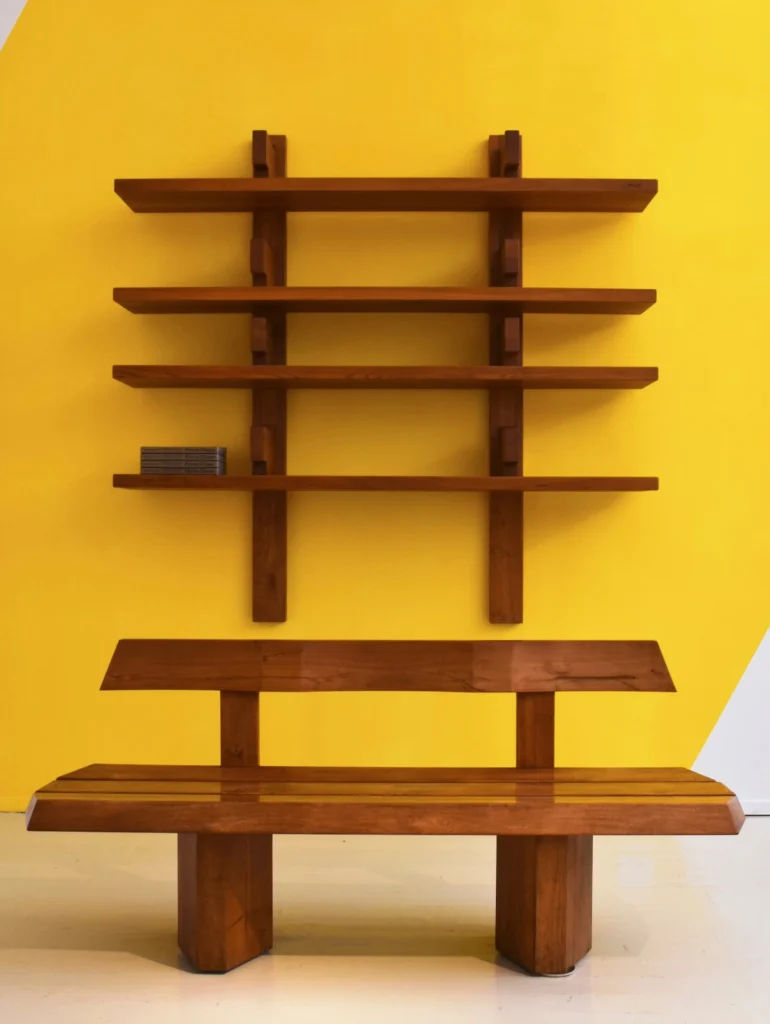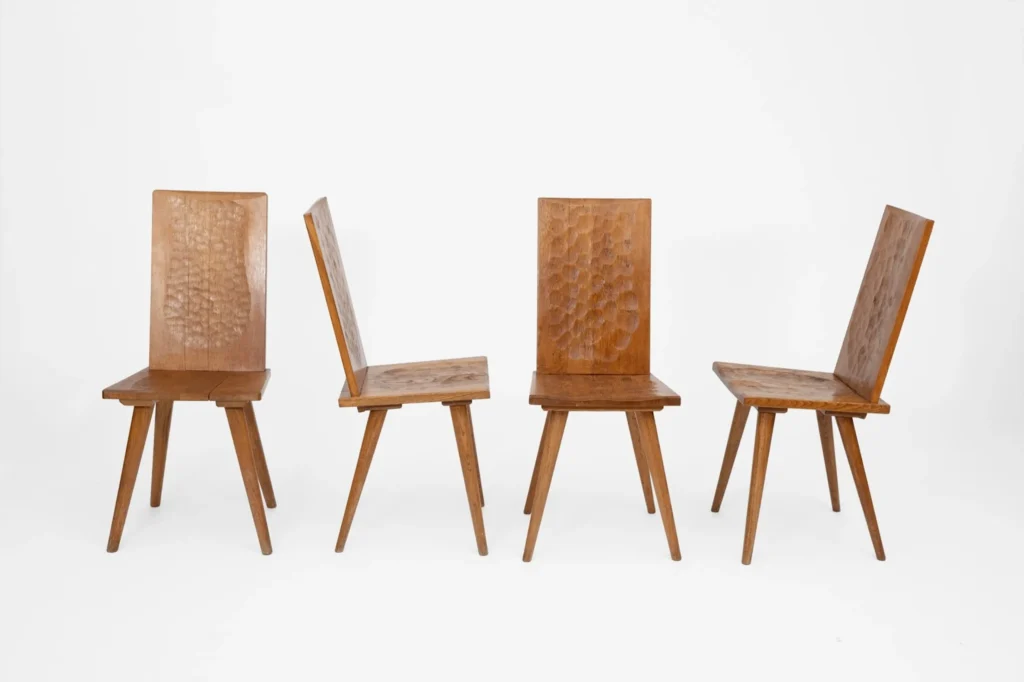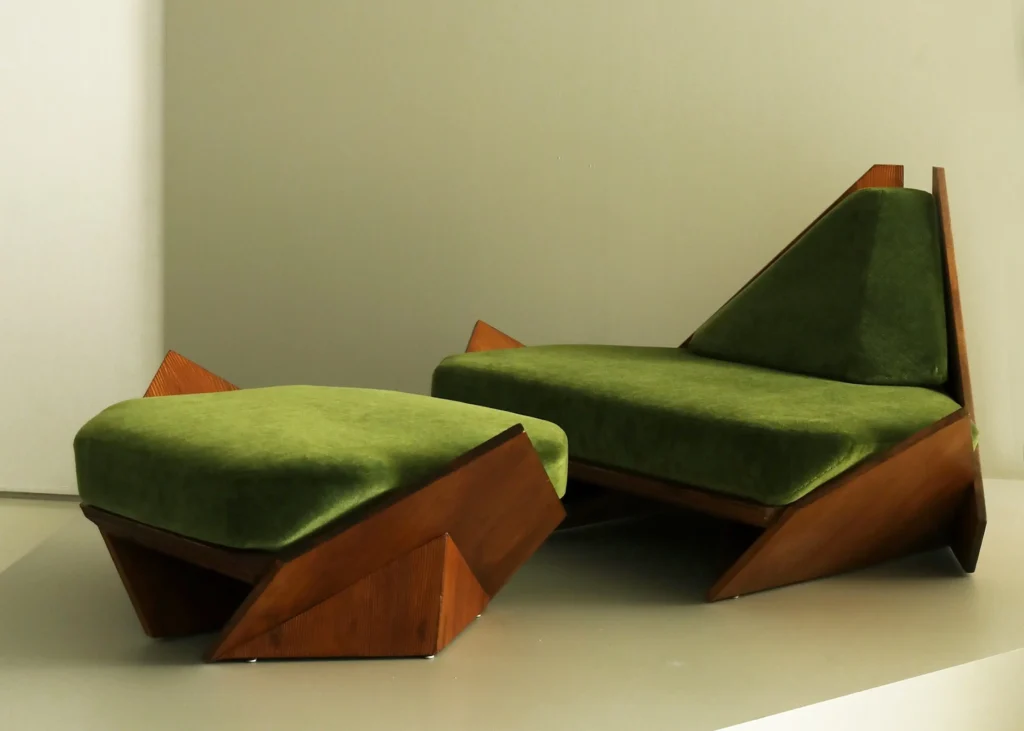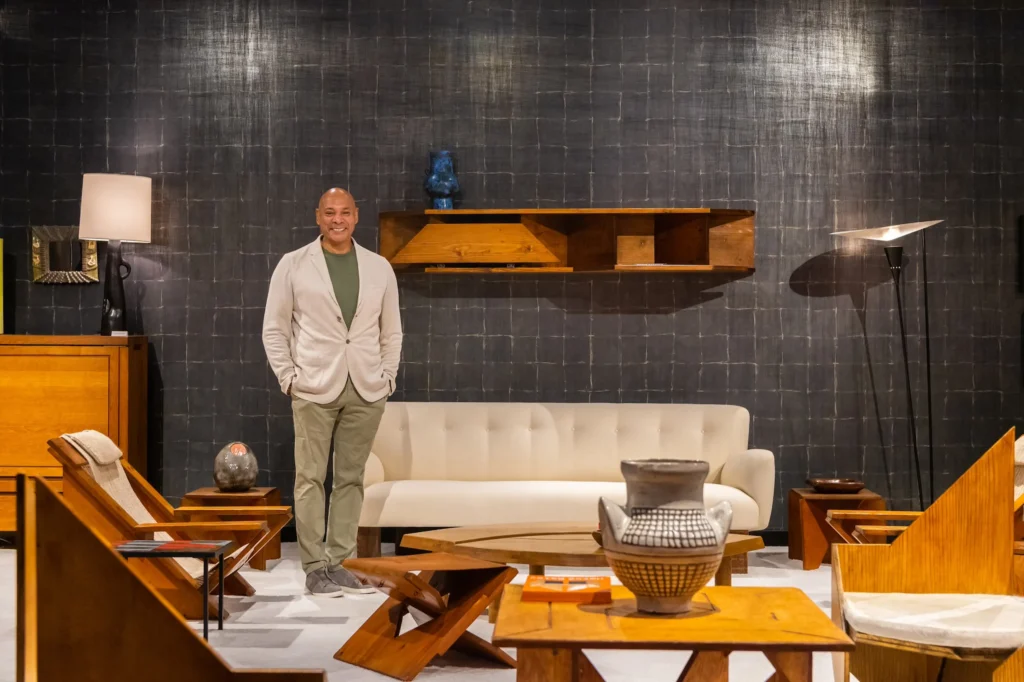
Whenever you walk into Magen H Gallery in Greenwich Village–whether you’re a serious design collector or a more casual design enthusiast—you can be sure that you will encounter something fresh, something curious—something that you have never seen before. Because the gallery’s founder, Paris-born Hugues Magen, has dedicated his nearly 25-year-long career to resurfacing 20th-century French architects, designers, and makers who had been largely excluded from the modernist design canon. Frequently sourcing exceptional examples directly from the French homes that first acquired them over a half a century ago, Magen has become internationally recognized for developing original scholarship and forging new markets around the work of these under-appreciated visionaries whose contributions to reimagining modern living in the postwar era deserve greater appreciation.
As my guests for last week’s Collecting Design: History, Collections, Highlights, Magen—speaking together with Magen H Gallery Global Director Nathalie Dheedene—explained that the role of the design dealer has continuously evolved since the eponymous gallery launched in 2003. As the market for collectible design has matured and vintage material has become increasingly exposed, the need for scholarly research and documentation has grown, and the discourse driving the market has become more multifaceted. Magen, it seems, has an eye for identifying new avenues of exploration before others know they exist. His gallery, for example, was showcasing furniture by Pierre Chapo, Hervé Baley, and Jean Touret as well as ceramics from La Borne long before this craft-driven body of mid-century French design achieved the A-list status it enjoys today.
Prior to establishing his gallery, Magen was a dancer. In 1980, he moved from Paris to New York and landed a position with Alvin Ailey before securing Principal Dancer at Dance Theater of Harlem. Near the turn of the millennium, he fell in love with a chair designed by Ray and Charles Eames, which inspired him to seek out other examples of modernist design. Within only a few years, Magen turned this private passion into a new profession. He focused his gallery’s program around the allure of postwar French furniture, especially designs that bring together formal simplicity, an architectural sensibility, excellent craftsmanship, and authentic materials. Over the years, he has elevated the connoisseurship and valuation of a number of once-obscure French design figures.
Case in point: French architect-trained designer-craftsman Pierre Chapo (1927-1987), who combined modernist principles with handcraft production to create beautifully simple furniture forms, often crafted in French elm, between the 1950s and 60s. In his heyday, Chapo’s designs were quite popular; his showroom in the 13th arrondissement catered to artsy, bohemian clients like Samuel Beckett until he retired from furniture-making in the 1970s. As tastes turned toward the high-tech and minimalist in the 1980s, Chapo began to be forgotten. His boldly sculptural work reemerged from the shadows of the past only recently, and rather swiftly became highly sought-after by architects and interior designers, leading to record-breaking sales season over season.
Magen first discovered a bibliothèque by Chapo at an off-the-beaten-track Parisian gallery 20 years ago. Instantly attracted to the piece’s unique, architectural structure, he began scouting out more of Chapo’s work. Thanks to his keen eye, he was able to snap up unattributed pieces from small auction houses. The more he acquired, Magen explained in our conversation, the more finely tuned his expertise became, allowing him to fully understand Chapo’s oeuvre and distinguish between the ordinary and extraordinary. The best pieces, Dheedene added, were created as one-off special commissions that gave Chapo full creative freedom to realize his brilliance.
In 2017, Magen H Gallery organized the groundbreaking retrospective, Pierre Chapo: A Modern Craftsman, accompanied by a robust catalogue full of archival materials from the designer-craftsman’s estate. The book remains the definitive Chapo textbook to this day. Within two years of the show, the Chapo market exploded. Guided by Chapo’s son, Fidel, and later by his grandson, Zoran, the estate has started to reedition the original designs under the label Chapo Creations.
Another case study in Magen’s precocious eye for untapped value: his early investment in the work of Hervé Baley (1933-2010), a French architect and architecture professor active in France in the 1960s and 70s and later in Morocco in the 1990s. Influenced by Frank Lloyd Wright’s principles of harmony between habitation and the natural world, Baley built residences that nestled organically into the landscapes that surrounded them and filled the interiors with his own essentialist furniture designs, typically constructed in plywood and reminiscent of Wright’s Usonian collection. Unlike Chapo, Baley’s furniture was always site-specific and never serially produced. When Magen first encountered Baley’s work, he told us, he couldn’t identify the designer but he recognized the greatness right away.
In 2018, Magen H Gallery opened the first-ever exhibition of Baley’s design work, again accompanied by a scholarly monograph documenting the French architect’s vision and legacy. The majority of the pieces in the show were sourced from Baley’s own 1960s-era Paris apartment as well as from his renovated farm property in Normandy. As a young architect, Dheedene explained, Baley favored inexpensive plywood, which like a magician he manipulated into dynamic sculptural yet functional forms, always finding ways to use his raw materials efficiently and without waste to keep costs down. Magan and Dheedene recalled their investigatory trips into the world of Baley, where they discovered homes filled with his furniture designs—some untouched for decades. The research even took them to Marrakesh, where the new environment had inspired Baley to take his designs in a new direction.
This week, Magen H Gallery opens Les Artisans de Marolles: The Resurgence of Craftsmanship in the 1950s, an exhibition dedicated to a cooperative of craftsmen founded by artist-sculptor Jean Touret in a small village in Loir et Cher in 1950. Including metalworker Henri Vion, woodworkers Emile Leroy and his son Maurice, weaver Edmond Le Flohic, and ceramicist Manuel Gold, Touret’s workshop specialized in handcrafted furniture and objects expressed in a pared-back modernist idiom that embraced functionality as well as honest construction methods.
The work of Les Artisans de Marolles is increasingly showing up at galleries and fairs of late, but Magen H Gallery was among the first to resurface it—a recurring story in the life of the gallery. I’m always watching to see what the gallery (re)discovers next. Dr. Frank Moore, neurosurgeon and avid collector, may have summed up Magen’s superpower best when he told me: “As easy as it is to write about Hughes, it is difficult to capture him in only few sentences, so without ado I offer these words: brilliant, always charming, knowledgeable, great sense of taste, curious, erudite, pioneer, spiritual, gifted, a joy to be with… and did I say great taste?”
This article was published today in Forum Magazine. All images courtesy Magen H.






